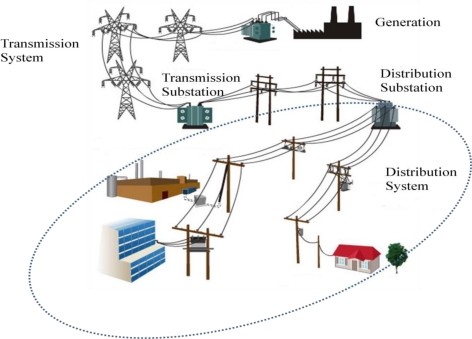
Do not assume all things are good.
For those who wish to do the right thing and help moving to sustainable future.
You have your solar panels installed and cutting your power bills with maybe some sales to the grid.
you won’t get rich, but you know it is a good investment. But as with any investment keep your eye on it.
Unknown to most your solar inverter and or battery inverter are set to stop feeding to grid and stop all generation or feed of power if the average Grid voltage is over 255 Volts for 10 minutes ( 255 V is for single phase systems ). What you see is no power from panels or battery for your own use or for feed to grid. This is only fixed if for 10 minutes the average Grid voltage falls below 255 Volts.
Grid voltage is the voltage of the incoming power supply.
The Australian standard for Voltage ( 1 phase ) is 230 V + 10% -6% ie from 216 V to as high as 253 V
Who looks at this and who would ever know. Well if you want to know you cannot find out without your own measurements. In my case this was measured by my Solis 5Kw inverter so it would cut generation when Grid V was high. In 9 months of generation this was not an issue. Power generation stats showed great in summer / autumn with less in winter months. Until one day almost no generation. Broken you might say. but then you look at screen on inverter and it says “LimByVg” ( limited by voltage ) Power generation is zero. What the hell. then you start the process of learning what you never thought necessary.
Must be the power company is trying to control output and force purchase from grid, and not pay me my 11.3 c/Kwh for selling excess to the grid. Well…. I do not think this is so.
Each area has a step down Transformer which reduces voltage and supplies power in your local vicinity. Power is transmitted at high voltage from main generating sources over longer distance as this is most efficient with least loss. Each vicinity in a typical residential area takes 3 phases and supplies evenly one of the phases to your home. The nominal voltage being 230 V. Due to changing conditions of use i.e your consumption, Voltage will drop as use increases. Today with local feed of power from homes this should reduce the drop particularly in summer afternoons when air cons go on, If all Home solar power and battery inverters are set as they should be this should not push the voltage above 253 V in the area.
Local step down transformers need tweaking to compensate for changes in local use and solar introduction.
To get onto this issue when it occurs, I recommend you take these steps;-
Rule 1) make sure you monitor performance regularly ( look at the nice graphs online or on your phone )
Rule 2) make sure you register your smart meter so you have access of your usage data online
Rule 3 ) If something goes out of normal e.g. power generation stops
a) Check your inverter for error condition and search on google for what this is.
b) if it is Over voltage then report online to grid supplier ( NOT YOUR RETAILER )
you will require your meter information NMI number and Register number ( photo on phone can help)
c) Call grid supplier to make sure you have a registered complaint number
d) Repeat b) and c) until you are happy you have been registered
Now your grid supplier will monitor voltage and within 20 days take action and advise you.
Better still have a monitoring package installed with external feedback and taking action so you do not have to be vigilant. This will cost you small monthly fee, but you have it covered, and some nicer graphs to show how your investment is performing.
The Australian Standard AS 60038 states the nominal mains voltage as 230 V +10%, – 6%, giving a range of 216.2 to 253 V
When over this range there is heightened risk of failure of appliances with costly repairs required So keep watch whether you have solar or not.


I have a similar issue – ‘LimByVg’, and have a big reduction in solar generation. This started a few months ago.
Solis (Inverter manufacturer) insists this ‘panel message’ is not an issue, and will not affect the amount of solar power generated. They suggest that I have the panels inspected and cleaned to overcome this issue.
AUSNET ,the power distributer, insist it is an issue with the Solis inverter. They recommended that I go back to ‘Solis’ and the actual installer.
The installer ‘installs’ units only, and has very little idea how they actually work!
I am in the process of getting a completely independent, local electrical contractor to do a complete check of the entire solar set up at my residence.
The next step is going to be the ‘Energy and Water Ombudsman Victoria’.
Any advice you can offer would be really appreciated.
Australian standard for Voltage ( 1 phase ) is 230 V + 10% -6% ie from 216 V to as high as 253 V
It took months of complaining with Voltage data extracted every 10 minutes to convince supplier that voltages were outside standards
it then took Supplier about 2 months to replace appropriate area transformer to stop the issue. Since that time it has worked 100%